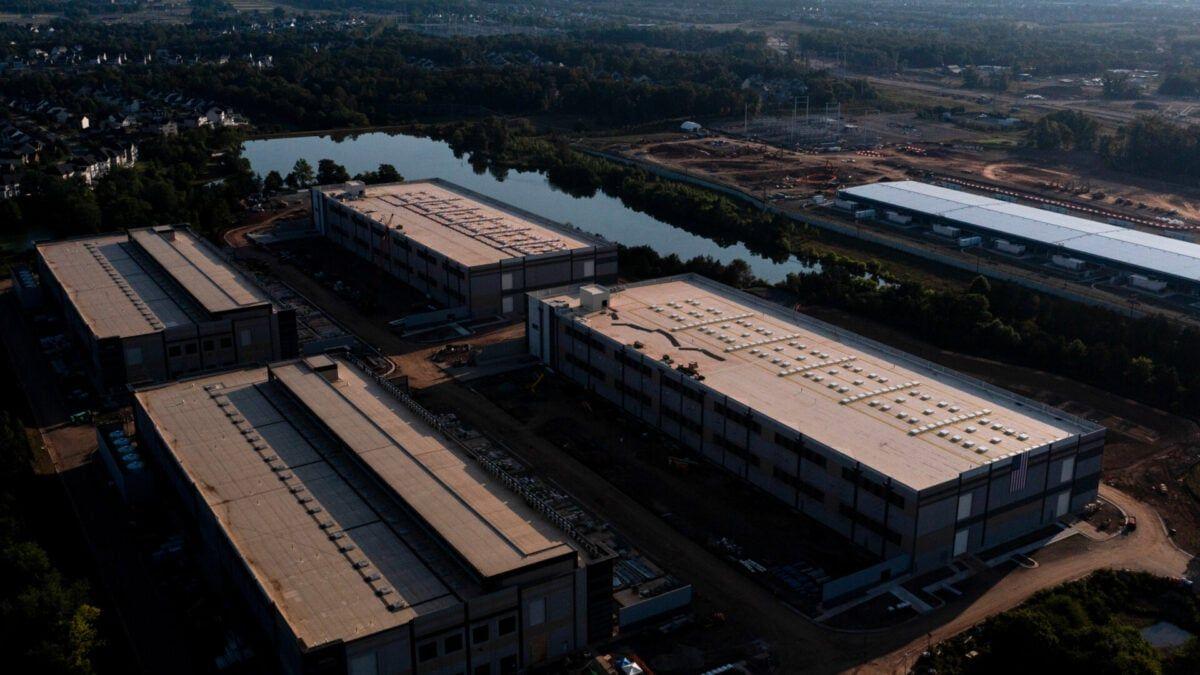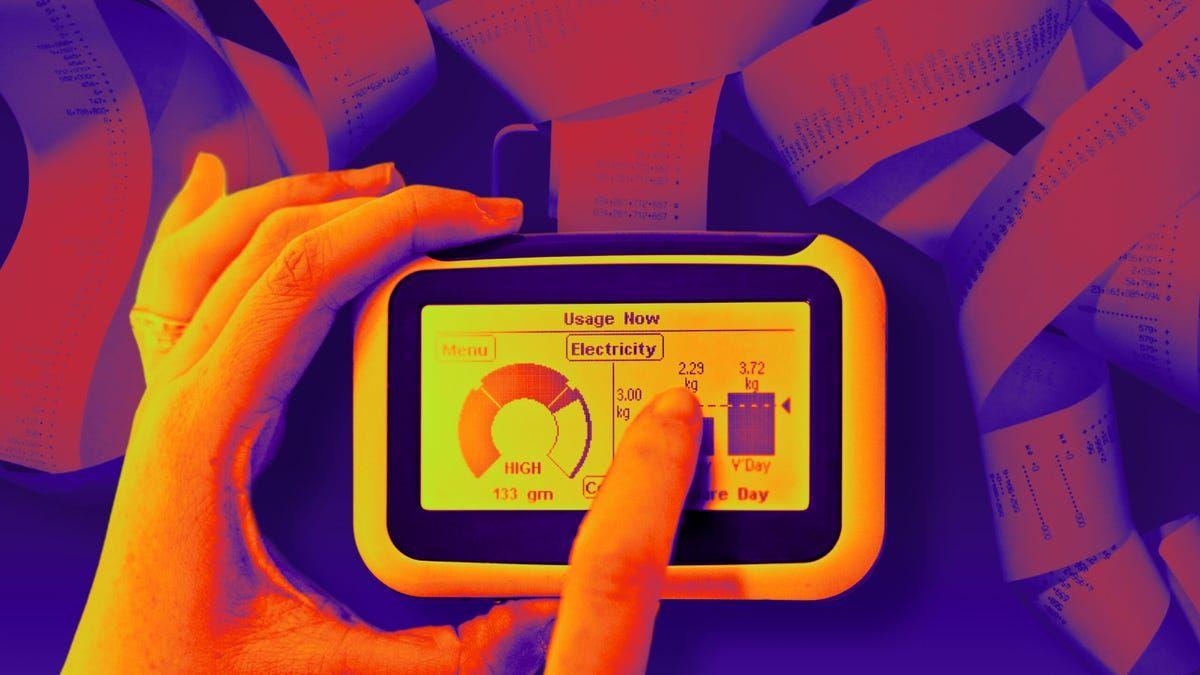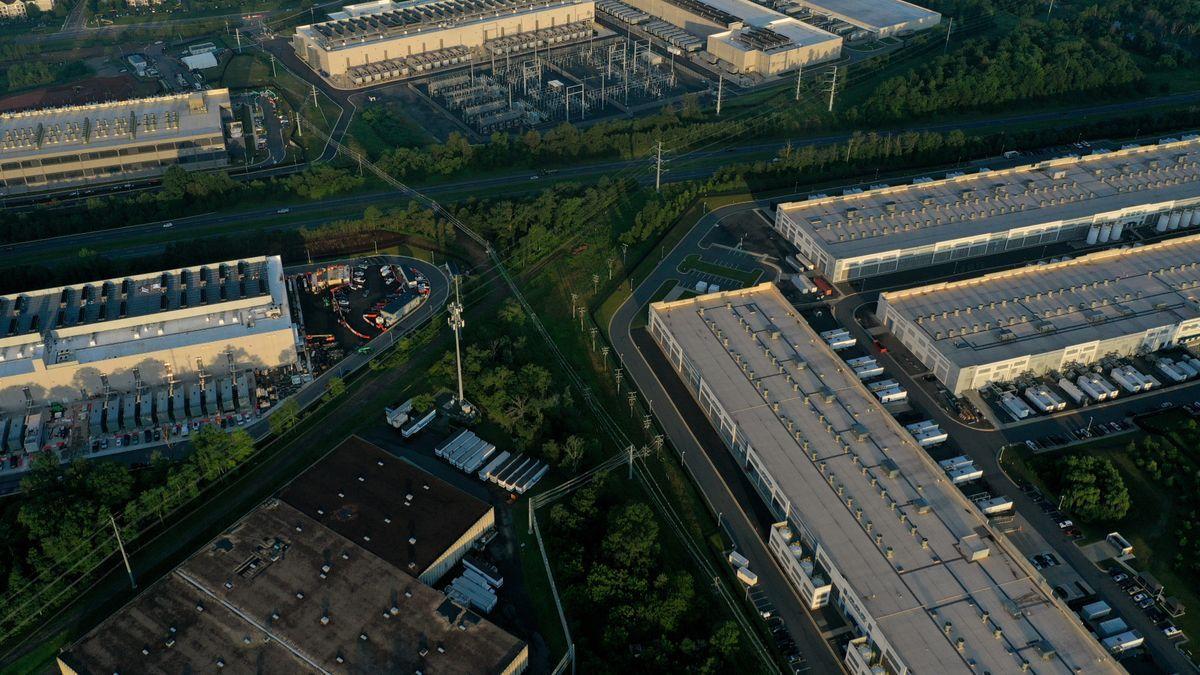Rising Electricity Costs: The Hidden Price of AI's Data Center Boom
6 Sources
6 Sources
[1]
Electricity Prices are Going Up, and AI Is to Blame
Your electricity bill has likely gone up over the course of the past year. That's because you're effectively paying an AI tax. According to a report from Axios, the cost of electricity is climbing across the country, driven primarily by the increasing energy demands of massive data centers being built to train and run AI models. Data from the U.S. Energy Information Administration showed the cost of 1 kilowatt-hour of electricity rose from 16.41 cents to 17.47 cents over the course of the past year, a 6.5% increase. But on a state-by-state level, residents are seeing their electrical bills skyrocket. Maine saw electricity prices jump 36.3%, Connecticut's climbed by 18.4%, and Utah saw a 15.2% bump. That is at least in part because of the data centers that are being stood up as quickly as possible by tech companies who are all in on AI. A recent report from the think tank RAND Corporation estimated that global power demand from AI data centers could hit 327 gigawatts (GW) by 2030â€"about 30% of the United States' current grid capacity of 1,280 GW. The demands of existing and proposed data center projects is already stressing the grid and its operators. In the mid-Atlantic region, which has become known as "Data Center Alley" because of the sheer number of facilities that operate there, prices are projected to rise after a recent capacity auction designed to ensure there is enough power generation available to meet demands saw prices skyrocket. An estimated 60% of that price increase was attributed to data centers by one report, which found that $9.3 billion will ultimately be passed along to customersâ€"mostly residents. It's not just the cost of the energy itself that is causing the price surge. It's the cost of building out the grid so quickly, too. According to Axios, the cost of those buildouts is being passed on to consumers, and there is currently a lot of demand for grid operators to build faster. Per the Lawrence Berkeley National Laboratory, grid connection requests at the end of 2023 were already more than double the US grid's existing energy capacity. It seems at least a little strange that the wealthiest companies on the planet and startups valued at multiple billions of dollars expect residents to foot the bill for their ambitions. Google, at least recently, signed an agreement to curb its energy usage from data centers during peak hours, but it also plans to pour $25 billion into data center projects. Firms like Meta are also powering ahead with massive data centers for their own AI initiatives. Meanwhile, it seems like we're all stuck subsidizing their power bills as they hold a gun to the head of the broader economy.
[2]
Electricity bills in KS and MO rising amid data center boom
Why it matters: Surging power bills could further stress many Americans' budgets as pretty much everything else gets more expensive, too. By the numbers: The nationwide average retail residential price for 1 kilowatt-hour of electricity rose about 6.5%, per the latest available data from the U.S. Energy Information Administration. * In Missouri and Kansas, it was a little more than 4% -- although Evergy rates have dropped 5%, according to communications manager Kaley Bohlen. Between the lines: Electricity prices vary regionally and have many influences. However, some analysts point to data centers as a driver of rising rates due to both their demand for energy and also because grid operators are investing in new energy infrastructure -- and passing those costs along to customers. * When Evergy was asked about energy usage for the anticipated $10 billion Northland data center, Bohlen pointed to several new solar and gas investments in Kansas and Missouri. * She told Axios some construction costs will be included on customer bills next year. What we're hearing: "Anywhere you're seeing a massive takeoff in load growth, the most likely cause is data centers, and that is almost certainly going to have an impact on electric rates," says Cathy Kunkel, energy consultant at the Institute for Energy Economics and Financial Analysis. * A new IEEFA analysis highlights a dramatic spike in capacity market prices set at auction by PJM -- an electric grid operator covering many Mid-Atlantic and Midwest states -- largely tied to data centers. * One estimate in the report found that data centers accounted for over 60% of the increase in prices -- representing $9.3 billion that will be passed along to customers. What's next: The Trump administration is pushing "coal, natural gas, nuclear and hydropower plants to feed AI demand," Axios' Daniel Moore reports -- but is hostile towards wind and solar. * Adding new generation of any kind, meanwhile, takes time and money. The bottom line: Many of us are paying for the AI boom, whether we use the tech or not.
[3]
Electricity costs rise amid data center boom
Why it matters: Surging power bills could further stress many Americans' budgets as pretty much everything else gets more expensive, too. By the numbers: The nationwide average retail residential price for 1 kilowatt-hour of electricity rose from 16.41 cents to 17.47 cents between May 2024 and May 2025, per the latest available data from the U.S. Energy Information Administration, a gain of about 6.5%. * Some states saw much larger increases, such as Maine (+36.3%), Connecticut (+18.4%) and Utah (+15.2%). * Just five states saw a decrease, including Nevada (-17.7%) and Hawai'i (-7%). Between the lines: Electricity prices vary regionally and have many influences, from basic supply and demand to fuel rates and infrastructure costs. * Yet many analysts point to power-hungry data centers as a driver of rising rates, especially in data center hotspots. * That's partly because of data centers' immediate demand for energy, but also because grid operators are investing in new transmission lines and other gear to handle their expected proliferation -- and passing those costs along to customers. What they're saying: "Anywhere you're seeing a massive takeoff in load growth, the most likely cause is data centers, and that is almost certainly going to have an impact on electric rates," says Cathy Kunkel, energy consultant at the Institute for Energy Economics and Financial Analysis. * A new IEEFA analysis highlights a dramatic spike in capacity market prices set at auction by PJM -- an electric grid operator covering many Mid-Atlantic and Midwest states -- largely tied to data centers, like those in Northern Virginia's "data center alley." * One estimate found that data centers accounted for over 60% of the increase in prices in a PJM auction held last year, the report says -- representing $9.3 billion that will be passed along to customers. Zoom in: A December 2024 report from the Virginia General Assembly's Joint Legislative Audit and Review Commission found that data centers in the area are covering their own usage for now, but predicts that locals could see a $14-$37 increase in their monthly bills by 2040, before inflation. Friction point: Data centers' need for power may outstrip electric utilities' ability to feed them, the JLARC report found, slowing their growth. * Meanwhile, utilities that invest in new infrastructure to power the AI boom could find themselves in trouble should that boom turn out to be a bubble. * What good are a bunch of new transmission lines if there's no power-thirsty customer at the other end? What's next: The Trump administration is pushing "coal, natural gas, nuclear and hydropower plants to feed AI demand," Axios' Daniel Moore reports -- but is hostile towards wind and solar. * Adding new generation of any kind, meanwhile, takes time and money. The bottom line: Many of us are paying for the AI boom, whether we use the tech or not.
[4]
Utah sees third-highest jump in U.S. electricity prices
The big picture: Power costs are rising nationwide -- and could get even higher for some amid an explosion in data centers powering AI and more. Why it matters: High utility bills could further stress many Utahns' budgets as pretty much everything else gets more expensive, too. * The state's consumer sentiment dropped almost 5% last month, per the University of Utah's Kem C. Gardner Policy Institute report. By the numbers: The nationwide average retail residential price for 1 kilowatt-hour of electricity rose from 16.41 cents to 17.47 cents between May 2024 and May 2025, per the latest available data from the U.S. Energy Information Administration. That's a gain of about 6.5%. * Utah's power costs climbed 15.2% during that time, the third-highest spike in the nation. * Maine (+36.3%) and Connecticut (+18.4%) saw the largest increases. * Just five states experienced a decrease, including Nevada (-17.7%) and Hawai'i (-7%). Zoom in: With electricity costs on the rise, Rocky Mountain Power, the state's largest utility, is seeking to hike residential rates. * The company proposed a 30.5% rate increase in July 2024, citing "inflationary pressures," Utah News Dispatch reported. * The request was later revised to an 18.1% uptick after drawing sharp criticism from state Republican leaders, including Gov. Spencer Cox. * Last month, the Utah Public Service Commission reaffirmed its approval of a modest 4.7% rate bump after the utility requested a review. What we're watching: Rocky Mountain Power filed an appeal to the Utah Supreme Court in June. Between the lines: Electricity prices vary regionally and have many influences, from basic supply and demand to fuel rates and infrastructure costs. * Yet many analysts point to power-hungry data centers as a driver of rising rates, especially in hotspots. What's next: President Trump's administration is pushing "coal, natural gas, nuclear and hydropower plants to feed AI demand," Axios' Daniel Moore reports -- but is hostile toward wind and solar. * Adding a new power source of any kind, meanwhile, takes time and money. The bottom line: Many of us are paying for the AI boom, whether we use the tech or not.
[5]
Electricity costs are rising, and a boom in data centers could make it worse
Why it matters: Surging power bills could further stress many Americans' budgets as pretty much everything else also gets more expensive. By the numbers: The nationwide average retail residential price for 1 kilowatt-hour of electricity rose from 16.41 cents to 17.47 cents from May 2024 to May 2025, per the latest available data from the U.S. Energy Information Administration, a gain of about 6.5%. * Some states had large increases, such as Maine (36.3%) and Connecticut (18.4%), while just five states had decreases. State of play: Arizona had one of the smallest electricity cost increases during that time, from 15.49 cents to 15.76 cents (1.7%). The intrigue: The Corporation Commission is preparing for the strain that data centers are expected to put on Arizona's energy grid. * Possibilities include higher energy rates for data centers to pay for the extra infrastructure and power generation facilities they could necessitate, or allowing them to generate their own power. * Gov. Katie Hobbs vetoed legislation this year that would've waived some environmental and zoning regulations to make it easier for large industrial power users like data centers to place small modular nuclear reactors at their facilities. * Arizona Public Service, Salt River Project and Tucson Electric Power this year announced that they're exploring the possibility of building a nuclear plant. Zoom in: There are several plans for massive new data centers in Arizona, including a 3,330-square-foot, $33 billion "data center corridor" in Eloy, which would be among the largest in the U.S. * Project Blue, a proposed data center in Tucson, has faced public backlash over concerns about energy and water use. Zoom out: Electricity prices vary regionally and have many influences, including basic supply and demand, fuel rates and infrastructure costs. * Yet many analysts point to power-hungry data centers as a driver of rising rates, especially in data center hotspots. * That's partly because of data centers' immediate demand for energy, but also because grid operators are investing in new transmission lines and other gear to handle their expected proliferation -- and passing those costs along to customers. What's next: The Trump administration is pushing "coal, natural gas, nuclear and hydropower plants to feed AI demand," Axios' Daniel Moore reports -- but is hostile to wind and solar.
[6]
Here's Why Your Energy Bill Keeps Climbing-And Won't Fall Anytime Soon
Capacity costs have been passed on to consumers, who are already paying more per month on their electric bills. If your electric bill has been higher than expected this summer, you're not alone. The reason why, though, isn't just sweltering temperatures -- it's artificial intelligence (AI). Data centers, the massive computing facilities used to develop advanced AI models, require immense amounts of power. As Big Tech firms have raced to bring data centers online, demand for electricity has skyrocketed. A Department of Energy backed report estimates that data centers could command up to 12% of all electricity generated in the U.S. by 2028, up from 4.4% in 2023 and just 2% in 2019. Take PJM Interconnection, an electrical grid operator serving 13 states and Washington D.C., including Virginia's so-called "data center alley," where Amazon (AMZN) and others have set up shop. PJM has an annual auction that determines the price of wholesale electricity, and at last year's auction, the cost in most areas jumped more than ninefold. Those capacity charges got passed onto PJM consumers starting in June, to the tune of an extra $18 per month in western Maryland, $16 a month in Ohio, and about $10 in Washington D.C., according to the Institute for Energy Economics and Financial Analysis. PJM's auction for the 2026-2027 year happened last month, and capacity costs jumped again. The grid operator estimates that its 67 million customers could see their electric bills increase as much as 5% when the new rates go into effect next June. PJM is just one grid operator, but it's considered something of a bellwether for prices across the country. Nationally, the average retail residential cost of a single kilowatt-hour of electricity has already jumped from 16.41 cents in May 2024 to 17.47 cents a year later, according to the U.S. Energy Information Administration (EIA). The EIA projects costs will rise to above 18 cents by the end of 2026.
Share
Share
Copy Link
Electricity prices are increasing across the United States, with data centers powering AI technologies being a significant contributor. This trend is raising concerns about energy infrastructure and the economic impact on consumers.
The Rising Cost of Electricity
Across the United States, consumers are experiencing a significant increase in their electricity bills. According to data from the U.S. Energy Information Administration, the average retail residential price for 1 kilowatt-hour of electricity rose from 16.41 cents to 17.47 cents between May 2024 and May 2025, marking a 6.5% increase
1
3
. Some states have seen even more dramatic spikes, with Maine experiencing a 36.3% increase, Connecticut 18.4%, and Utah 15.2%3
.
Source: Axios
The AI-Driven Data Center Boom
A primary driver behind this surge in electricity costs is the rapid expansion of data centers, particularly those powering artificial intelligence (AI) technologies. These power-hungry facilities are placing unprecedented demands on the electrical grid. A report from the RAND Corporation estimates that global power demand from AI data centers could reach 327 gigawatts (GW) by 2030, which is about 30% of the United States' current grid capacity
1
.
Source: Gizmodo
Impact on Regional Energy Markets
The concentration of data centers in certain areas is having a pronounced effect on local energy markets. In the mid-Atlantic region, known as "Data Center Alley," recent capacity auctions have seen prices skyrocket. An analysis by the Institute for Energy Economics and Financial Analysis (IEEFA) found that data centers accounted for over 60% of the increase in prices in a PJM auction, representing $9.3 billion that will be passed along to customers
2
3
.Infrastructure Challenges and Costs
The rapid growth of data centers is not only increasing direct energy consumption but also necessitating significant infrastructure upgrades. Grid operators are investing heavily in new transmission lines and other equipment to handle the expected proliferation of these facilities. The costs of these buildouts are being passed on to consumers, contributing to the overall increase in electricity prices
1
3
.State-Specific Responses and Concerns
Different states are grappling with the challenges posed by this trend in various ways:
- In Utah, Rocky Mountain Power initially proposed a 30.5% rate increase, later revised to 18.1%, citing inflationary pressures
4
. - Arizona is preparing for the strain on its energy grid, considering higher energy rates for data centers and exploring alternative power generation methods, including small modular nuclear reactors
5
. - Virginia's Joint Legislative Audit and Review Commission predicts that locals could see a $14-$37 increase in their monthly bills by 2040 due to data center growth
3
.
Related Stories
Political and Policy Implications
The Trump administration is pushing for increased use of traditional energy sources like coal, natural gas, nuclear, and hydropower plants to meet the growing demand from AI-related infrastructure. However, this approach is at odds with efforts to promote renewable energy sources like wind and solar
3
4
5
.The AI Tax on Consumers
The situation has led some analysts to describe the rising electricity costs as an "AI tax" on consumers. Many Americans are effectively subsidizing the AI boom through their electricity bills, regardless of whether they directly use or benefit from these technologies
1
2
3
. This raises questions about the equitable distribution of costs associated with technological advancement and the responsibility of tech companies in managing the broader economic impacts of their rapid expansion.References
Summarized by
Navi
Related Stories
AI's Energy Appetite: How Data Centers Are Driving Up Electricity Costs for Consumers
17 Jun 2025•Technology

AI Data Centers Spark Surge in Electricity Costs for Consumers
30 Sept 2025•Business and Economy

AI Boom Drives Up Utility Bills: The Hidden Cost of Technological Progress
18 Oct 2025•Business and Economy

Recent Highlights
1
Google launches Gemini 3 Flash as default AI model, delivering speed with Pro-grade reasoning
Technology

2
OpenAI launches GPT Image 1.5 as AI image generator war with Google intensifies
Technology

3
OpenAI launches ChatGPT app store, opening doors for third-party developers to build AI-powered apps
Technology





